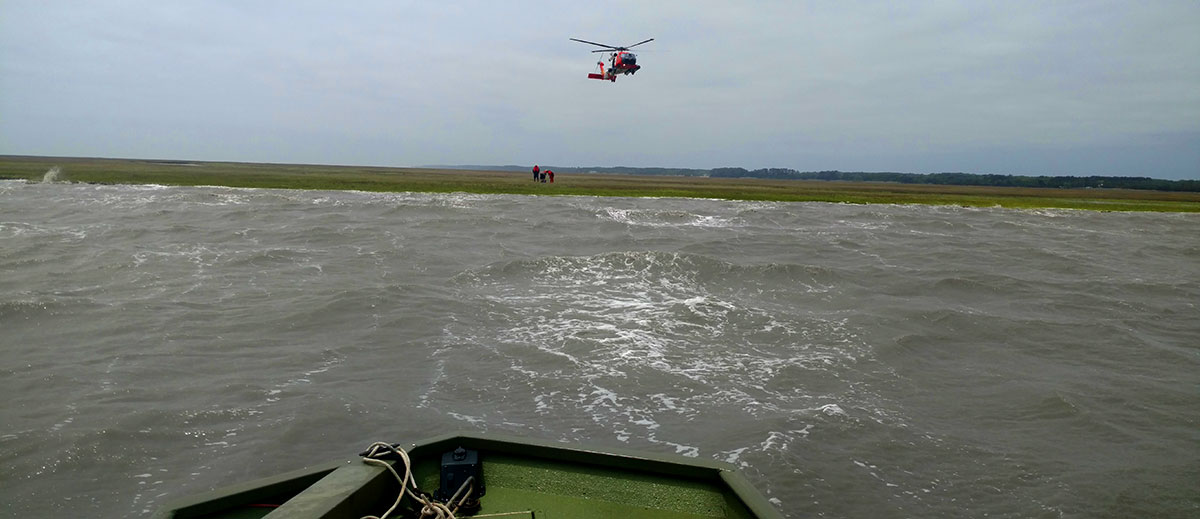
On Saturday, May 20th, 2017, the United States Coast Guard, Sector Hampton Roads received a distress call from a boater adrift in heavy seas South of Wachapreague on Virginia’s Eastern Shore. Department of Wildlife Resources (DWR) Dispatch was alerted and contacted Conservation Police Officers (CPO) Steven Bratton and Travis Murray who responded to the area to conduct the search/rescue by water. The officers would be coordinating with the USCG helicopter responding from Elizabeth City, NC.
DWR officers located the boaters in Bradford Bay, a shallow coastal bay located between the Eastern Shore mainland and Parramore Island. This bay is characterized by shifting sand bars, large oyster rocks and shallow water. The experienced officers were very familiar with this type of working environment having patrolled countless hours during past waterfowl seasons in similar conditions. They responded with a special 18’shallow draft aluminum patrol vessel. This boat has a tunnel design hull and floatation pods on the stern which allows for operation in very shallow water.
The officers arrived and located the boaters about the same time as the USCG helicopter. The 17’ Bass Tracker boat had become overwhelmed by the rough sea conditions and heavy wind and had grounded in the tidal marsh. The occupants were out of the boat and standing in the marsh that was becoming inundated by the rising tide. CPO Bratton and Murray coordinated with the USCG Rescue Swimmer and aircrew to evacuate the boaters from the marsh, secure the vessel and get the boaters back to dry land.
The return trip back to the boat launch was rough and wet but was described as “routine for the conditions” by the officers. The very wet boaters were met by friends at USCG Station Wachapreague. CPO Bratton and Murray were thankful that they were able to assist and bring this rescue to a successful conclusion.
Boaters should be prepared for the changing weather that is often encountered and know the limitations of their boats. One of the factors that prevented this incident from becoming a tragedy was the boat operators’ ability to relay an accurate GPS location to the USCG. It is important to plan ahead and have the required safety equipment on board before heading out for a day on the water. In this case, PFD’s, a reliable means of communication (a cell phone in this case) and knowing their position was instrumental in this successful rescue.
Learn More:


